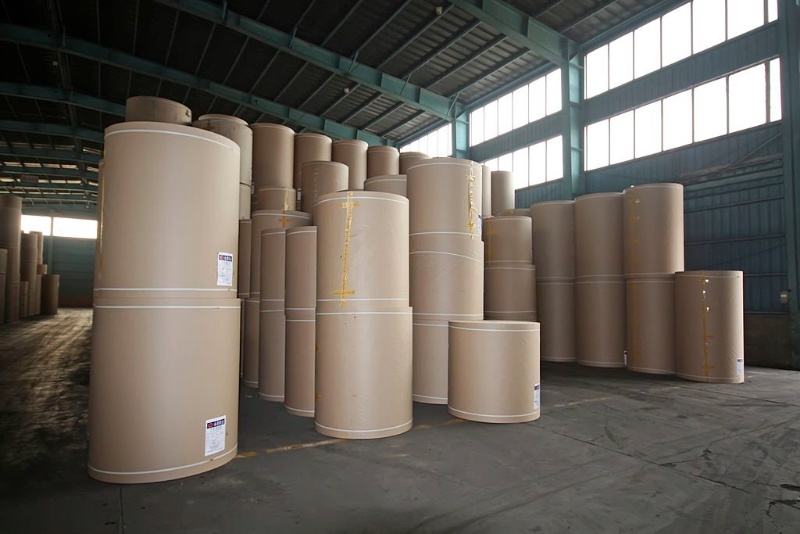How Kraft Paper is made?

Kraft paper is made through a process of sulfide processing, and this process of paper making ensures that the kraft paper is exactly suited for its intended purpose. Finest kraft papers have great demands for color, texture, consistency, and aesthetic value, owing to increased standards for rupture resilience, tear, and tensile strength, and typically demand a reduced Stiffness and extremely high porosity. It is often made from kraft pulp wood pulp.
To achieve the color and aesthetic quality standards, the pulp must be bleached such that the brightness of the pulp reaches between 24 percent and 34 percent while keeping the yellow and red values of the pulp reasonably steady, i.e. to retain the solidity of the whitewashed pulp's tone.
It focuses on the procurement of fiber raw materials, pulp simmering, pulp bleach, pulp battering, net formation, compressing, curing, paper finishing, and other manufacturing techniques and process control for the quality standards and usage features of fine kraft paper.
Kraft Paper Manufacturing Process
The kraft paper manufacturing process has the following phases included in it.
1. Mixing Raw Material
The process of papermaking of any kind is somewhat similar with distinctions in terms of the quality, thickness, and addition of other properties. The production of kraft paper manufactured from long-fiber wood pulp is complex, but it has a greater physical prowess rating.
This procedure results in softwood and hardwood combining pulp to meet the quality technical criteria of fine kraft paper. Hardwood pulp accounts for around 30% of the total. The physical strength of the paper does not diminish considerably as a result of this raw material ratio, but the consistency, gloss, and other criteria are clearly enhanced.
2. Bleaching & Cooking
Kraft paper pulp must have fewer rough fiber bundles and uniform colors and meet high-quality cooking and bleaching procedures standards for cooking and bleaching procedures. It is usually recognized that there is a significant variation in cooking and bleaching efficiency comparing wood samples. If the pulp manufacturing line can segregate softwood and hardwood pulping, softwood and hardwood cooking and bleaching might be selected.
The phase employs combined cooking of softwood and hardwood, combined bleaching after cooking, and the cooking grade under a production environment without distinct pulping. Non-consistent, coarser fiber bundles, pulp color instability, and other quality defects are common during the manufacturing method.
3. Pressing
Improving the pulping procedure is an essential step in increasing the paper toughness of the kraft paper. In principle, to enhance the toughness of the paper, compactness, and uniformity of the paper, it is important to suitably raise the compressing degree of the pulp, whilst retaining its decent air porosity and low stiffness.
Kraft paper has greater quality criteria for uniformity, as well as the quantifiable inaccuracy of vertical and lateral deviations. To that aim, the grade is increased by employing proper pulp-to-web proportions, mesh shakers, and net shapers, among other things. The pressing method of production influences the ventilation, stiffness, and smooth nature of the paper.
The pressing lowers the porosity of the sheet, lowering its permeability and vacuum level while enhancing its tightness; the air permeability and tightness of the paper rise fast as the is always and duration increase. The paper's physical prowess can be increased.
This is how the Kraft paper is usually made, and at Shree Varudi the brand improves the overall quality by incorporating enhanced methods and techniques which provides the kraft paper a unique quality.
For more information-
Contact us : +91 94848 22222
Email us: sales@shreevarudi.com